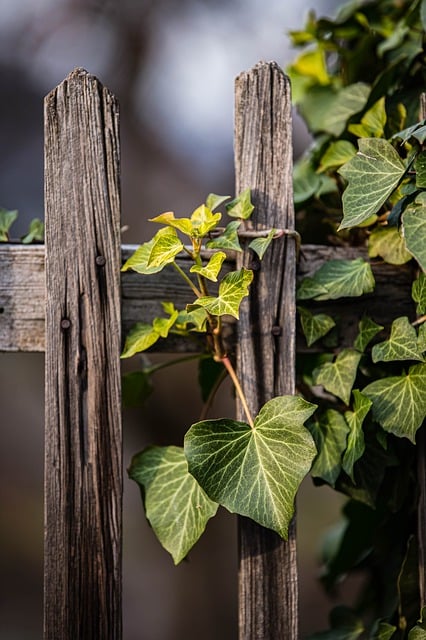New Bedford residents often rely on fences for security, aesthetics, and property demarcation. However, these structures are susceptible to various issues, from weather damage to vandalism. Understanding common problems specific to New Bedford’s climate and local conditions is the first step in effective fence management. This article guides you through choosing the right fence style and material, outlines the installation process with a step-by-step guide, offers expert tips for maintenance, and navigates local regulations and permits, ensuring your New Bedford fence project is both functional and compliant.
- Understanding Common Fence Issues in New Bedford
- Choosing the Right Fence Style and Material
- The Installation Process: Step-by-Step Guide
- Expert Tips for Effective Fence Maintenance
- Local Regulations and Permits for Fence Projects
Understanding Common Fence Issues in New Bedford
Fences in New Bedford, like anywhere, face a range of issues that can compromise their structural integrity and aesthetic appeal. Common problems include rot and decay, especially in areas with high moisture content, which can weaken wooden fences and lead to replacement needs. Wind damage is another frequent concern, particularly for older or improperly installed fences. Overgrown vegetation and roots can also cause bend and distortion, affecting the overall alignment of the fence. Additionally, severe weather events, such as storms and hurricanes, can significantly impact fences, leaving them damaged and in need of repair or total replacement.
Regular maintenance is key to mitigating these issues, but even with care, fences will eventually require attention. Recognizing these common problems allows New Bedford homeowners and property managers to be proactive in fence care and choose the right repairs or installations to ensure longevity and visual appeal.
Choosing the Right Fence Style and Material
Choosing the right fence style and material is an essential step in any repair or installation project. It sets the tone and functionality for your outdoor space. Consider factors like privacy, aesthetics, and climate when making this decision. For instance, a solid wood fence offers a classic look but requires more maintenance than vinyl or metal options, which are low-maintenance alternatives.
Materials also vary in durability and cost. Wrought iron fences exude elegance but can be costly and susceptible to rust. Concrete fences, though sturdy, may crack over time. Modern composite materials mimic the appearance of wood without the upkeep, making them a popular choice for homeowners seeking a blend of beauty and practicality.
The Installation Process: Step-by-Step Guide
The installation process for a new fence begins with careful planning and measurement to ensure a perfect fit. First, assess your property boundaries and decide on the type of fencing best suited to your needs and aesthetic preferences. Common choices include wood, vinyl, or chain-link fences. Once determined, measure the perimeter of your desired fence line accurately. This step is crucial for obtaining the right materials and ensuring a secure installation.
Next, gather all necessary tools and materials: posts, brackets, strings, levels, hammers, drills, and any specific hardware required for your chosen fencing material. Mark the post locations along the measured fence line, considering the recommended spacing for each type of fence. Dig holes for the posts, ensuring they are deep enough to provide stability. Install the posts securely using concrete or other suitable foundations, allowing adequate time for the concrete to set. Attach the horizontal rails and fence panels according to manufacturer instructions, creating a sturdy framework. Finally, finish by adding any decorative elements or gates, ensuring all connections are secure and the fence stands robustly.
Expert Tips for Effective Fence Maintenance
Regular maintenance is key to keeping your fence in top condition, saving you from costly repairs down the line. Start by inspecting your fence at least once a month during spring and fall—these are peak seasons for damage due to extreme weather changes. Look out for loose or broken boards, rot, rust on metal parts, and any signs of wear and tear. Repairing small issues promptly prevents them from escalating.
When it comes to cleaning, use a pressure washer or a brush and mild detergent solution to remove dirt, algae, and mold buildup. Avoid using harsh chemicals that could damage the fence’s material. For wooden fences, apply a fresh coat of sealant every 2-3 years to protect against water absorption and insects; metal fences benefit from regular painting to prevent rusting. Keep the area around your fence clear of debris and overhanging branches to ensure optimal health and longevity.
Local Regulations and Permits for Fence Projects
Before starting any fence repair or installation project in New Bedford, it’s crucial to familiarize yourself with local regulations and permit requirements. These guidelines are put in place to ensure safety, maintain neighborhood aesthetics, and protect environmental considerations. The first step involves checking with the local building department to understand specific rules related to fencing. This may include restrictions on height, materials used, and placement, especially near streets, alleys, or public spaces.
Obtaining the necessary permits is a critical aspect of any construction project. Permits ensure that your work complies with local codes and standards. They also provide legal protection for both you and the city, confirming that your fence meets safety and structural integrity requirements. The process typically involves submitting an application detailing your project plans, along with relevant fees. Keep in mind that permit regulations can vary based on property location and type, so it’s essential to consult the New Bedford building department for precise information.
